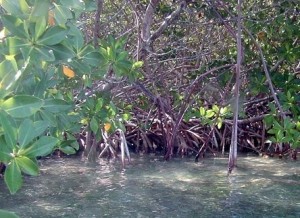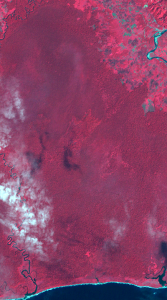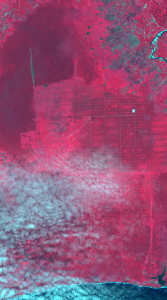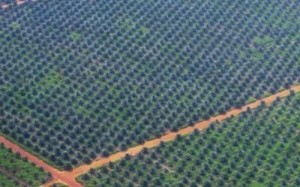 The Swiss NGO Paneco is engaged in Sumatra (Indonesia) where anthropogenic land use changes threaten local fauna and flora. The collaboration with Paneco has started with a small project that aimed at diagnosing rainfall intensity of a storm from TRMM 3B42 space radar data due to a lack of locally available rain gauges. The project continued with analysis of land use changes due to increasing oil palm plantations in northern Sumatra.
The Swiss NGO Paneco is engaged in Sumatra (Indonesia) where anthropogenic land use changes threaten local fauna and flora. The collaboration with Paneco has started with a small project that aimed at diagnosing rainfall intensity of a storm from TRMM 3B42 space radar data due to a lack of locally available rain gauges. The project continued with analysis of land use changes due to increasing oil palm plantations in northern Sumatra.
Mangroves woody trees or shrubs that grow in coastal areas and swamps. They occupy shallow water zones in tropical and subtropical coastal regions, usually where protected from direct wave action. The roots of the mangrove plants stabilize sand and mud. They also provide a habitat for wildlife, including several commercially important species of fish. Mangroves serve as a natural buffer to strong winds and waves produced by cyclones and they can protect against tsunamis.
image on the left was acquired by Landsat 5 in 1990 and shows a coastal mangrove area of around 400 km2 in south-western Aceh (Sumatra, Indonesia). The natural habitat is divided by the meandering Seumayam river which discharges into the Indian Ocean to the south. Dark red colors show natural vegetation, bright red indicate farming areas and blue colors mark bare soil and urban areas while blue-white colors are clouds. The image on the right was acquired by Landsat 7 in the year 2000 and shows the same area as above, but 10 years later: Almost all of the mangroves have been replaced with oil palm plantations. The rectangular and regular structures now show irrigation channels since oil palms have a high water demand. In the eastern part of the image a gradual expansion of farmland into the mangrove area can be witnessed.
Over 50% of the World’s mangroves have been lost during the past decades. In areas of the world where mangroves have been removed for development purposes, the coastline has been subject to rapid erosion. In Sumatra most of the mangrove trees have been replaced by oil palm plantations. Palm oil is a form of edible vegetable oil obtained from the fruit of the oil palm tree. Indonesia has become the second largest world producer of palm oil producing approximately 36% of world palm oil volume. There is increasing concern about environmental impacts of the palm oil industry since threatened species (such as the orang utan) live in the few remaining natural ecosystems on Borneo and Sumatra.
The false-color image from 5 August 2000 was acquired by the Enhanced Thematic Mapper plus (ETM+) aboard NASA’s Landsat 7 satellite. The one from 6 January 1990 was acquired by the Thematic Mapper (TM) aboard NASA’s Landsat 5 satellite. The Landsat satellites enable scientists to monitor land use and land cover change since 1972. Images by Reto Stöckli, based on Landsat data from the Global Land Cover Facility.
Further Reading
Paneco. Wanted: Undamaged Rainforest
Earth Observatory: Deforestation in Indonesia



